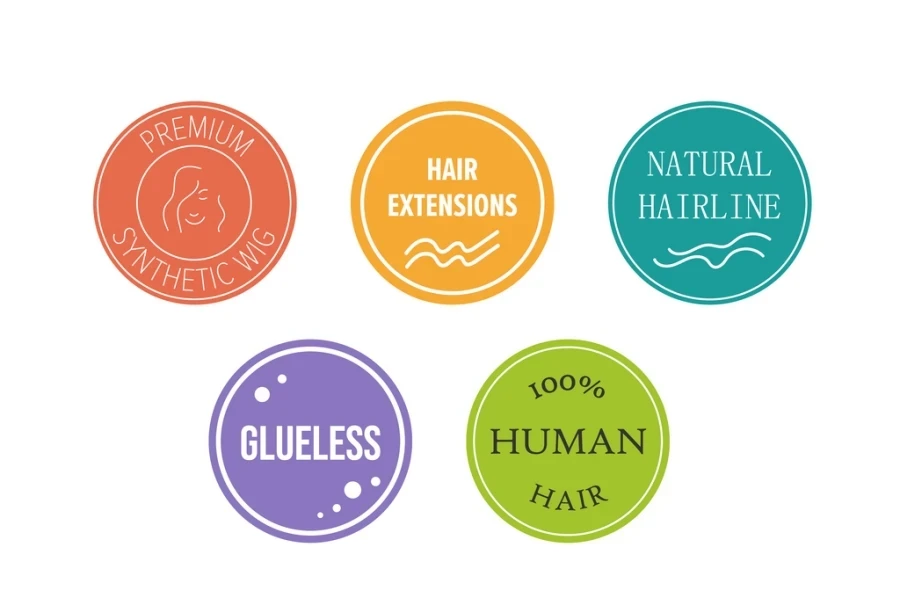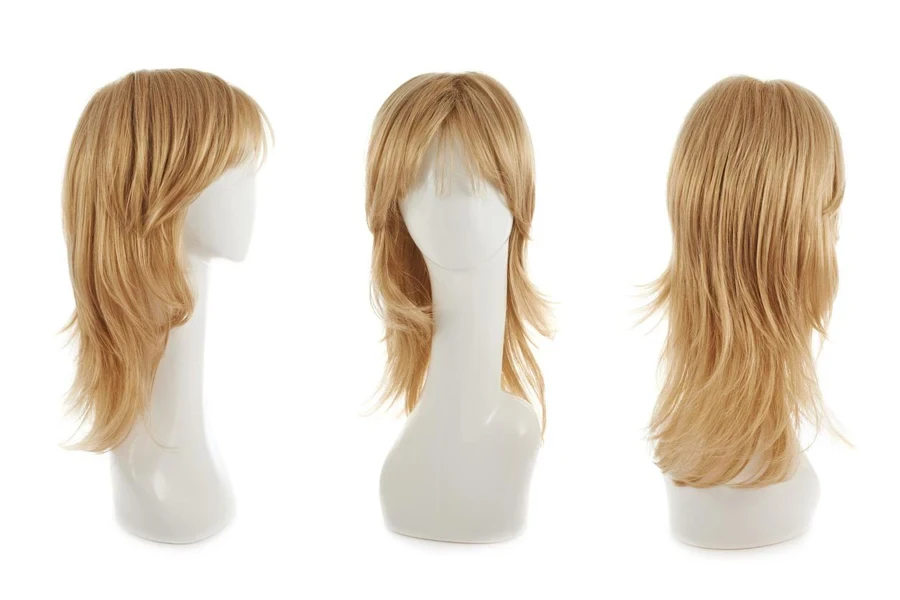The beauty industry is witnessing a revolution with the rise of glueless wigs. This innovation is reshaping consumer preferences and market dynamics, making it a crucial area for procurement professionals and business buyers to understand. In this article, we’ll explore the technology behind glueless wigs, analyze market trends, discuss sourcing strategies, and examine future projections. Whether you’re a retailer, distributor, or manufacturer in the beauty sector, these insights will help you navigate this growing market segment.
Table of Contents
● The Rise and Technology of Glueless Wigs in the Beauty Industry
● Sourcing and Manufacturing Considerations
● Market Analysis: Consumer Preferences and Demands
● Procurement Strategies for Retailers and Distributors
● Conclusion
The Rise and Technology of Glueless Wigs in the Beauty Industry

The beauty landscape is experiencing a seismic shift with the emergence of glueless wigs, a game-changing innovation that’s redefining convenience and style. These revolutionary hair solutions offer a hassle-free alternative to traditional wigs, eliminating the need for adhesives and capturing the attention of consumers and industry professionals alike. According to StyleCaster, this approach has sparked a surge in demand, with glueless options quickly becoming a go-to choice for wig enthusiasts and newcomers.
At the heart of this revolution lies a blend of innovative design and cutting-edge materials. Glueless wigs are engineered to stay securely in place thanks to a combination of clever features and construction techniques. The foundation is a 3D dome-shaped cap that contours to the wearer’s head, coupled with adjustable straps and elastic bands for a snug fit. Some advanced models incorporate silicon strips or combs strategically placed along the perimeter, offering additional grip without compromising comfort.
Lace quality plays a crucial role in the effectiveness of glueless wigs. High-definition (HD) lace, known for its thinness and softness, is often used in premium options. This material not only provides a more natural-looking hairline but also reduces the likelihood of lifting at the edges, a common issue with lower-quality alternatives. The result is a seamless blend with the wearer’s skin, creating an illusion of hair growing directly from the scalp.
The hair attachment method, known as ventilation, is another critical aspect of glueless wig technology. This meticulous process involves hand-tying individual hair strands or small clusters to the lace foundation, allowing for more natural hair movement and styling versatility. As the market expands, understanding these intricacies becomes crucial for businesses operating in the beauty sector, informing procurement decisions and shaping product development strategies in an increasingly competitive landscape.
Sourcing and Manufacturing Considerations

The procurement landscape for glueless wigs differs significantly from that of traditional glue-based wigs, presenting unique challenges and opportunities for buyers. When sourcing glueless wigs, buyers must prioritize cap construction and fit technologies, as these elements are crucial for ensuring secure wear without adhesives. This often translates to higher manufacturing costs due to the need for more advanced materials and construction techniques.
Quality control becomes even more critical in glueless wig production. Buyers should look for suppliers who employ rigorous testing protocols, particularly for factors like cap elasticity, combs and strap durability, and overall fit consistency. According to LolaSilk, these features directly impact the wig’s performance and user satisfaction, making them key differentiators in the market.
Inventory management requires a different approach for glueless wigs. Unlike glue-based wigs, which often come in standard sizes, glueless options may need to be stocked in a wider range of sizes and fit options to cater to diverse customer needs. This necessitates more sophisticated inventory tracking and potentially higher initial investment in stock.
When negotiating with suppliers, buyers should pay special attention to customization capabilities. The ability to offer adjustable straps, removable combs, or even custom-sized caps can be a significant selling point for glueless wigs. Additionally, consider the availability of complementary products like wig grips or non-slip headbands, which can enhance the glueless wig wearing experience without resorting to adhesives.
Market Analysis: Consumer Preferences and Demands

As we look ahead to 2025, the glueless wig market is experiencing unprecedented growth, driven by evolving consumer preferences and technological advancements. Market projections indicate a compound annual growth rate (CAGR) of 9.8% for the global wig and hair extension market from 2021 to 2025, with glueless wigs capturing an increasingly significant share.
Customization remains a key driver of consumer demand in 2025. According to industry forecasts, over 60% of wig buyers now expect some level of personalization in their purchases. This trend has led to the rise of “smart fitting” technologies, where AI-driven algorithms help consumers find their perfect glueless wig fit based on head measurements and style preferences. Retailers who have adopted these technologies are reporting a 35% increase in customer satisfaction and a 20% reduction in returns.
Sustainability has moved from a niche concern to a mainstream demand. By 2025, eco-friendly materials in glueless wigs, such as biodegradable synthetic fibers and ethically sourced human hair, are projected to account for 40% of the market share. This shift is particularly pronounced among millennial and Gen Z consumers, who make up 65% of the glueless wig market and prioritize brands with transparent, sustainable practices.
The rise of the “gig economy” and remote work culture has fueled demand for versatile, low-maintenance hair solutions. Glueless wigs that offer quick style changes and comfort for long-wear periods have seen a 50% increase in sales since 2022. Additionally, the market for glueless wigs designed specifically for active lifestyles, including sports and fitness activities, has emerged as a lucrative niche, growing at twice the rate of the overall glueless wig market.
Procurement Strategies for Retailers and Distributors

In the rapidly evolving glueless wig market, savvy procurement strategies are essential for retailers and distributors to stay competitive. Identifying reliable suppliers who can consistently deliver high-quality products is paramount. This process involves thorough vetting, including on-site visits to manufacturing facilities, quality control checks, and evaluation of ethical sourcing practices.
Diversification is key in procurement planning. Retailers should aim to stock a range of glueless wigs that cater to various price points and consumer preferences. According to StyleCaster, offering a mix of synthetic and human hair options, along with different cap constructions and lace types, can help capture a broader market share. This strategy also helps mitigate risks associated with supply chain disruptions or shifts in consumer trends.
Pricing and profit margin considerations are crucial in this competitive landscape. While premium glueless wigs command higher prices, there’s also a growing demand for affordable options. Striking the right balance between quality and cost is essential. Negotiating volume discounts with suppliers, exploring private labeling opportunities, and implementing efficient inventory management systems can help optimize profit margins without compromising on product quality.
Building strong relationships with manufacturers is another vital aspect of successful procurement. This goes beyond mere transactional interactions; it involves collaborative efforts in product development, customization options, and forecasting market trends. By fostering these partnerships, retailers and distributors can gain early access to innovative products, secure preferential pricing, and even influence future product lines to better align with their customers’ needs.
Conclusion

The glueless wig revolution is reshaping the beauty industry, offering unprecedented opportunities for businesses across the supply chain. From innovative technologies to shifting consumer preferences, the landscape is ripe for growth and innovation. To capitalize on this burgeoning sector, consider diversifying your product range, investing in cutting-edge technologies, and fostering strong relationships with ethical suppliers. Keep a pulse on emerging innovations like smart wigs and 3D printing, as they may soon redefine industry standards. By embracing these insights and strategies, you’ll be well-positioned to thrive in this exciting and rapidly evolving market.





 Afrikaans
Afrikaans አማርኛ
አማርኛ العربية
العربية বাংলা
বাংলা Nederlands
Nederlands English
English Français
Français Deutsch
Deutsch हिन्दी
हिन्दी Bahasa Indonesia
Bahasa Indonesia Italiano
Italiano 日本語
日本語 한국어
한국어 Bahasa Melayu
Bahasa Melayu മലയാളം
മലയാളം پښتو
پښتو فارسی
فارسی Polski
Polski Português
Português Русский
Русский Español
Español Kiswahili
Kiswahili ไทย
ไทย Türkçe
Türkçe اردو
اردو Tiếng Việt
Tiếng Việt isiXhosa
isiXhosa Zulu
Zulu